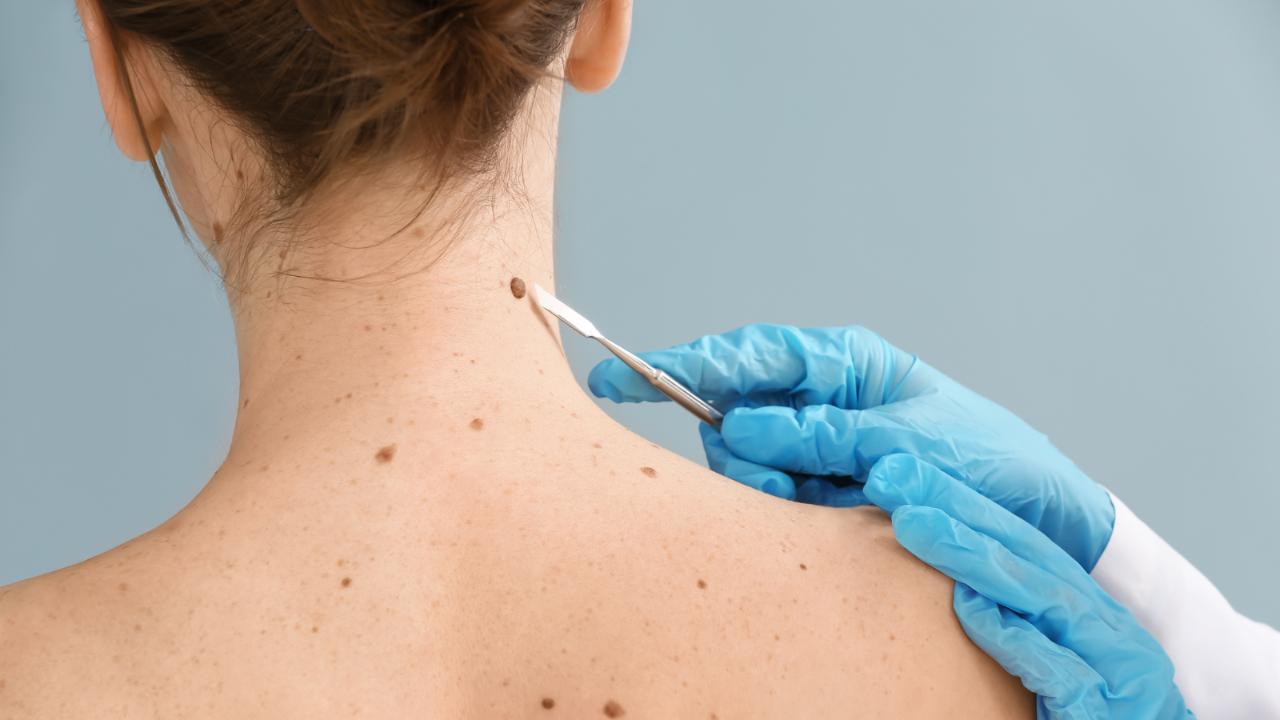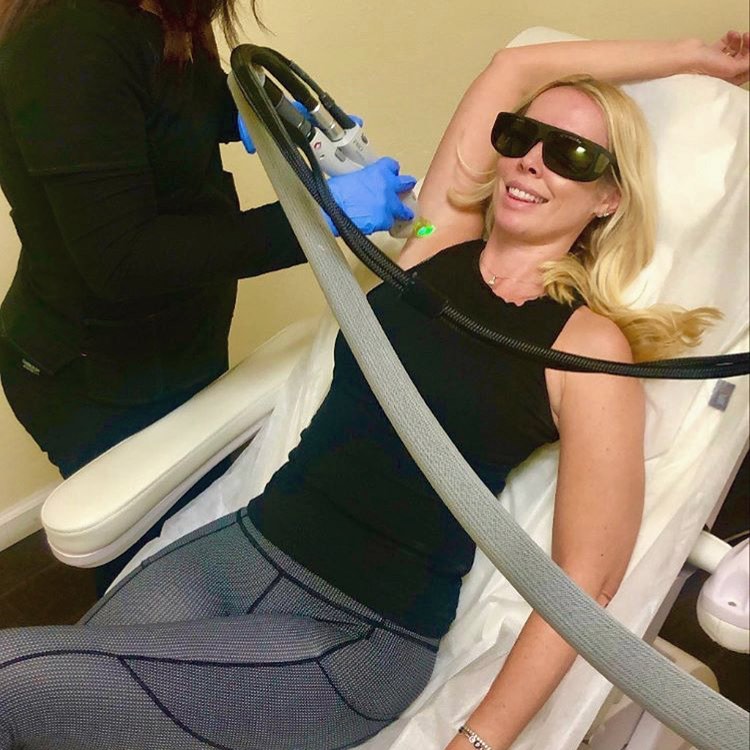Skin tags can be bothersome and impact your self-confidence, but fear not, for there are effective removal methods available. In this ultimate guide, you will discover the most efficient ways to bid farewell to those pesky skin tags. Spoiled Laser, your go-to destination for beauty transformation, offers a range of premium services including skin tag removal. Whether through laser treatments, facial treatments, or body contouring, Spoiled Laser has you covered. Say goodbye to skin tags and hello to a refreshed and confident you.
Understanding Skin Tags
Skin tags are common skin growths that appear as small, soft, and hanging pieces of skin. They are usually harmless and painless, but can be a source of concern or discomfort for some individuals.
Causes of Skin Tags
The exact cause of skin tags is not fully understood. However, several factors are believed to contribute to their development. These factors include friction or rubbing of the skin, hormonal changes, obesity, and hereditary predisposition.
Where do Skin Tags Commonly Appear?
Skin tags can appear on various parts of the body, but they are most commonly found in areas where the skin folds or creases. This includes the neck, armpits, groin, eyelids, and under the breasts. They can also occur on the face, particularly around the eyes.
Are Skin Tags Harmful?
In most cases, skin tags are harmless and do not require medical treatment. However, they can sometimes become irritated or inflamed due to friction or clothing rubbing against them. If the skin tag becomes excessively irritated, bleeds, or changes in color, shape, or size, it is recommended to consult a dermatologist for further evaluation.
Types of Skin Tags
There are several types of skin tags that can occur on the body. These include:
1. Acrochordons
Acrochordons are the most common type of skin tag. They usually have a narrow stalk or peduncle and a smooth surface. Acrochordons can vary in size and color.
2. Cutaneous Papillomas
Cutaneous papillomas are skin growths that have a warty appearance. They are typically elevated and are caused by the human papillomavirus (HPV).
3. Fibromas
Fibromas are small, round skin growths that are typically flesh-colored. They are made up of fibrous tissue and often have a smooth or slightly rough surface.
4. Fibroepithelial Polyps
Fibroepithelial polyps are similar to acrochordons in appearance but are typically larger and have a more irregular shape. They are commonly found in areas of friction, such as the underarms or groin.
Identifying Skin Tags
When identifying skin tags, there are several factors to consider:
Color and Texture
Skin tags are usually flesh-colored or slightly darker. They have a soft and smooth texture, similar to that of a small flap of skin.
Size and Shape
Skin tags can vary in size, ranging from a few millimeters to a few centimeters in diameter. They are typically elongated or oval-shaped, with a narrow stalk or peduncle attaching them to the skin.
Location on the Body
As mentioned earlier, skin tags commonly appear in areas of the body where the skin folds or creases. However, they can also occur on the face, particularly around the eyes, and in other areas of the body as well.
Home Remedies for Skin Tag Removal
If you have a skin tag that is causing discomfort or you simply wish to remove it for cosmetic reasons, there are several home remedies that may be effective:
1. Tea Tree Oil
Tea tree oil has natural antibacterial properties and is often used in skincare products. To remove a skin tag using tea tree oil, simply apply a few drops onto a cotton ball or swab and gently dab it onto the skin tag. Repeat this process several times a day for a few weeks until the skin tag falls off.
2. Apple Cider Vinegar
Apple cider vinegar is commonly used for various health and beauty purposes. To remove a skin tag using apple cider vinegar, soak a cotton ball in the vinegar and secure it over the skin tag with a bandage. Leave it on overnight and repeat the process daily until the skin tag dries up and falls off.
3. Garlic
Garlic has natural antifungal and antibacterial properties. To remove a skin tag using garlic, crush a garlic clove to release the juice and apply it directly to the skin tag. Cover it with a bandage and leave it on overnight. Repeat this process daily until the skin tag disappears.
4. Lemon Juice
Lemon juice is known for its natural bleaching properties. To remove a skin tag using lemon juice, soak a cotton ball in freshly squeezed lemon juice and apply it to the skin tag. Leave it on for about 30 minutes before rinsing off. Repeat this process twice daily until the skin tag fades away.
While these home remedies may be effective for some individuals, it is important to note that results may vary. If you are unsure or have any concerns, it is always best to consult a dermatologist for professional advice.
Over-the-Counter Products
If home remedies do not provide the desired results, there are various over-the-counter products available for skin tag removal. These products usually contain ingredients that help to dry out the skin tag, causing it to fall off. Common over-the-counter options include:
1. Skin Tag Removal Creams
Skin tag removal creams typically contain ingredients such as salicylic acid or trichloroacetic acid. These acids work by gradually breaking down the skin tag, allowing it to slough off over time. It is important to carefully follow the instructions provided with the product and discontinue use if any adverse reactions occur.
2. Skin Tag Removal Patches
Skin tag removal patches are adhesive patches that are applied directly to the skin tag. These patches usually contain ingredients that help to dry out the skin tag, similar to the creams. The patch creates a barrier between the skin tag and the surrounding skin, aiding in the removal process.
3. Freezing Kits
Freezing kits, also known as cryotherapy kits, are available for at-home use. These kits use a method called cryotherapy, which involves freezing the skin tag with a cold substance, typically liquid nitrogen. The freezing process causes the skin tag to die and fall off. It is important to carefully read and follow the instructions provided with the kit to avoid any potential skin damage.
Medical Procedures for Skin Tag Removal
If home remedies and over-the-counter products do not yield satisfactory results or if you prefer a more immediate and controlled method of removal, there are several medical procedures that can be performed by a dermatologist. These procedures include:
1. Cauterization
Cauterization involves burning off the skin tag using a special medical instrument that generates heat. This method effectively removes the skin tag but may result in a small scab or scar at the treatment site.
2. Cryotherapy
Cryotherapy, also known as freezing, involves applying liquid nitrogen or another freezing agent directly to the skin tag. The extreme cold causes the skin tag to freeze and eventually fall off. There may be temporary discomfort during the procedure, but it is generally well-tolerated.
3. Ligation
Ligation is a procedure that involves tying off the blood supply to the skin tag using a special thread or string. This cuts off the blood flow to the skin tag, causing it to wither and fall off over time. Ligation is typically performed using local anesthesia to minimize any discomfort.
4. Excision
Excision is a surgical procedure in which the skin tag is cut off using a scalpel or surgical scissors. This method ensures immediate removal of the skin tag but may result in a small scar. Local anesthesia is typically used to numb the area before the procedure.
Consulting a Dermatologist
While many skin tags can be safely and effectively removed at home using home remedies or over-the-counter products, there are instances where consulting a dermatologist is recommended.
When to Seek Professional Help
If you have any doubts about whether the growth on your skin is a skin tag or if you are uncertain about the best course of action for removal, it is advisable to consult a dermatologist. Additionally, if the skin tag is causing pain, bleeding, or other concerning symptoms, it is important to seek professional help.
What to Expect During a Dermatologist Visit
During a dermatologist visit, the dermatologist will evaluate the skin tag and assess the best method of removal based on its location, size, and characteristics. They will discuss the available treatment options and recommend the most suitable approach for your specific situation. The removal procedure may be performed during the visit, or a follow-up appointment may be scheduled.
Possible Side Effects and Risks
While the removal of skin tags is generally safe, there are potential side effects and risks associated with certain removal methods. These may include temporary discomfort, redness, swelling, bleeding, infection, scarring, or changes in skin color. It is important to follow all post-treatment instructions provided by the dermatologist to minimize the risk of complications.
Preventing Skin Tags
Although skin tags cannot always be prevented, there are steps you can take to reduce the likelihood of their development:
Maintaining Proper Hygiene
Practicing good hygiene by keeping your skin clean and dry can help prevent skin tags. Regularly washing the skin and thoroughly drying any areas prone to excessive moisture or friction can minimize the risk of skin tag formation.
Avoiding Friction and Irritation
Avoiding excessive friction or irritation to the skin can help prevent the development of skin tags. This includes wearing loose-fitting clothing, using smooth fabrics, and avoiding tight jewelry or accessories that may rub against the skin.
Maintaining a Healthy Weight
Maintaining a healthy weight can contribute to overall skin health. Obesity and excess body weight have been linked to an increased risk of skin tags. By maintaining a healthy diet and engaging in regular physical activity, you can reduce the likelihood of developing skin tags.
Monitoring Hormonal Changes
Hormonal changes, such as during pregnancy or menopause, have been associated with an increased risk of skin tag development. Monitoring and managing hormonal changes through proper medical care and lifestyle adjustments, if necessary, can help minimize the occurrence of skin tags.
Get Your Free Consultation Today
Skin Tag Removal Aftercare
After the removal of a skin tag, it is important to follow proper aftercare measures to promote healing and reduce the risk of complications:
Keeping the Area Clean and Dry
Keeping the area clean and dry is essential for proper healing. Gently cleanse the area with mild soap and warm water, pat it dry, and avoid excessive moisture or contact with irritants.
Avoiding Harsh Chemicals and Irritants
Avoid the use of harsh chemicals or irritants on the treated area, such as perfumes, lotions, or abrasive cleansers. These can potentially cause irritation or delay the healing process.
Applying Healing Creams or Ointments
Applying healing creams or ointments recommended by your dermatologist can promote healing and soothe the treated area. Follow the instructions provided and apply the product as directed.
Monitoring for Signs of Infection
Monitor the treated area for signs of infection, such as increased redness, swelling, pain, or pus. If you notice any concerning symptoms, contact your dermatologist for further evaluation and treatment.
Conclusion
In conclusion, skin tags are common skin growths that can be bothersome for some individuals. Understanding their causes, identifying their characteristics, and exploring various removal methods can help you effectively manage and remove skin tags.
From home remedies and over-the-counter products to medical procedures, there are numerous options available for skin tag removal. It is important to carefully consider the benefits and risks of each method, and consult a dermatologist when necessary.
Lastly, proper aftercare measures and preventive strategies can help maintain beautiful, tag-free skin. By embracing good hygiene practices, avoiding friction and irritation, maintaining a healthy weight, and monitoring hormonal changes, you can reduce the likelihood of skin tag formation and achieve optimal skin health.


